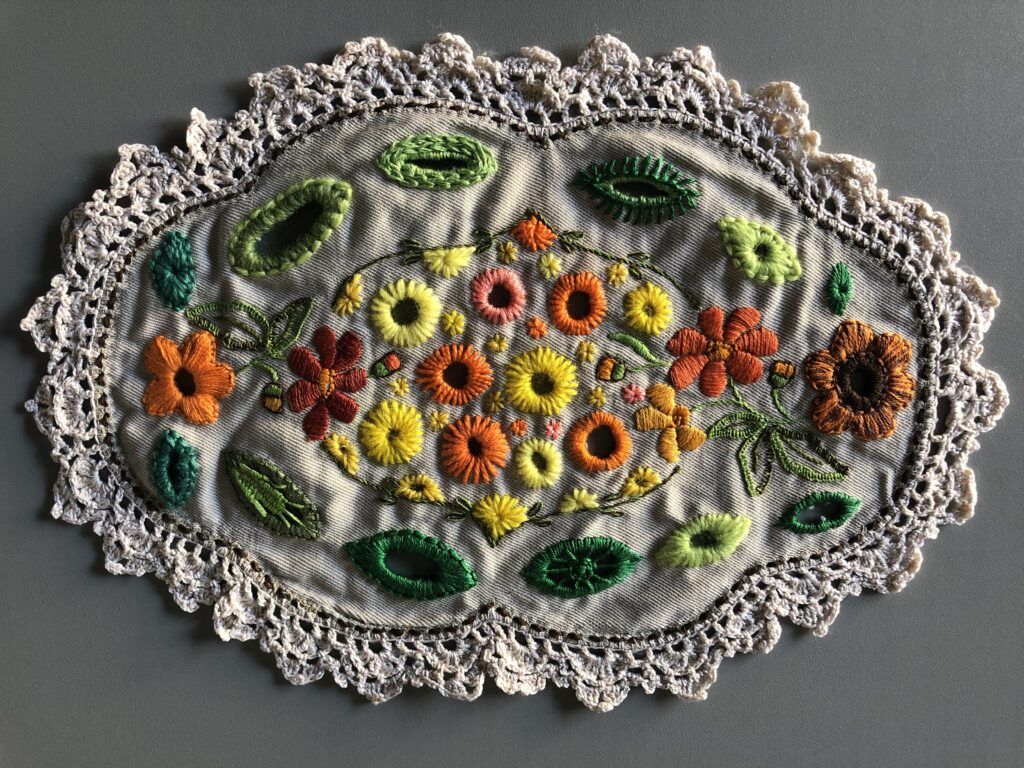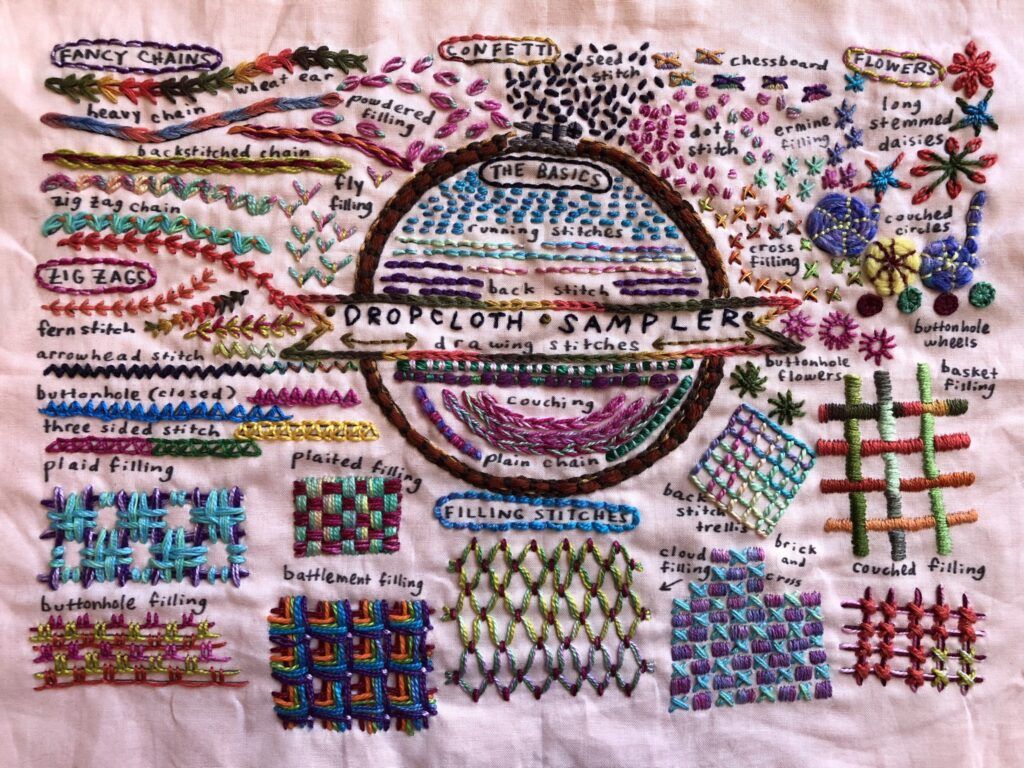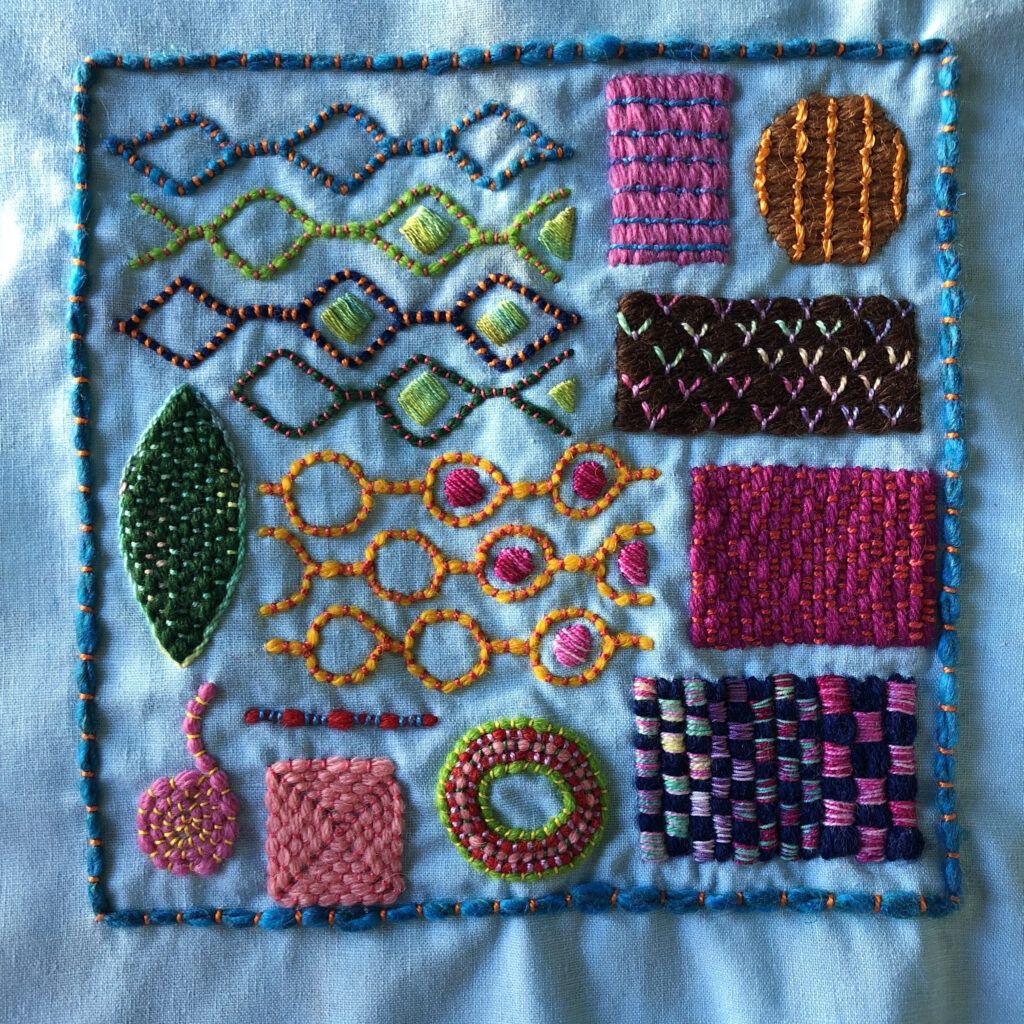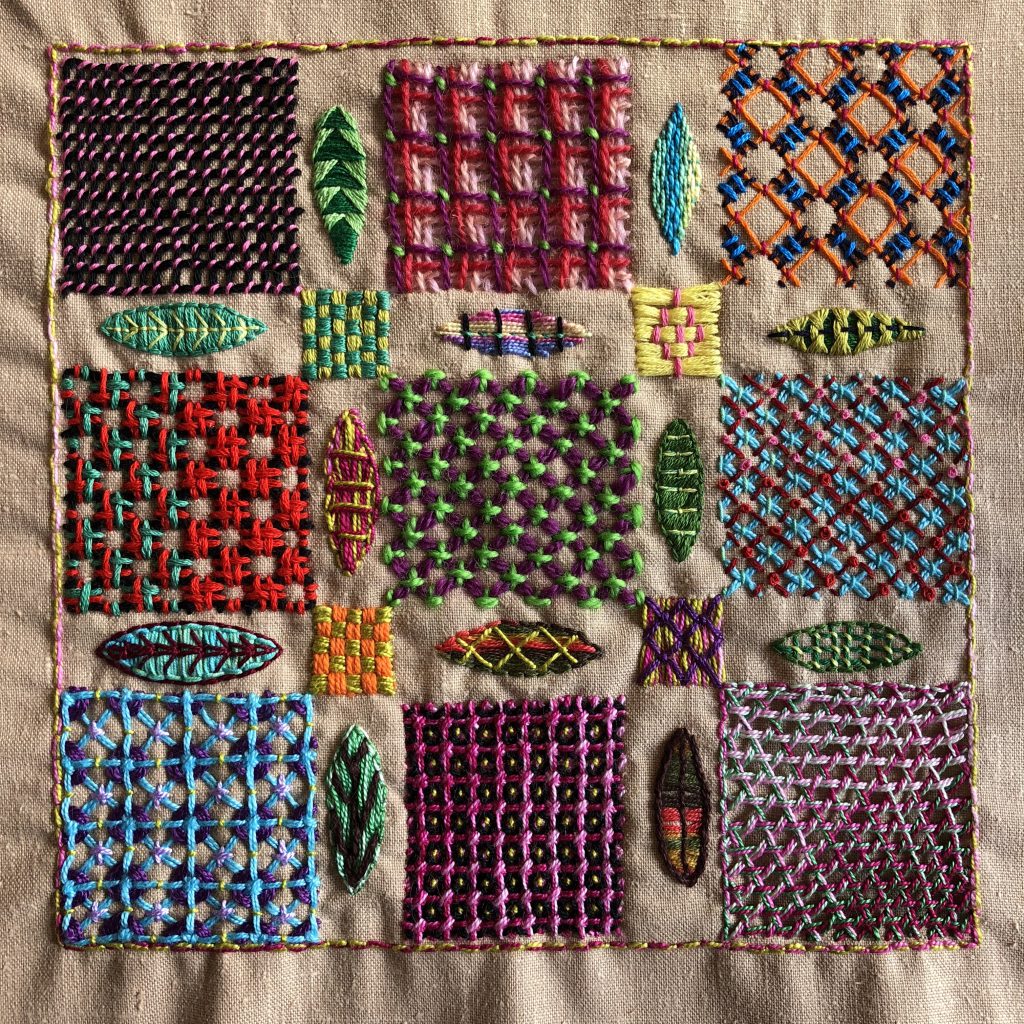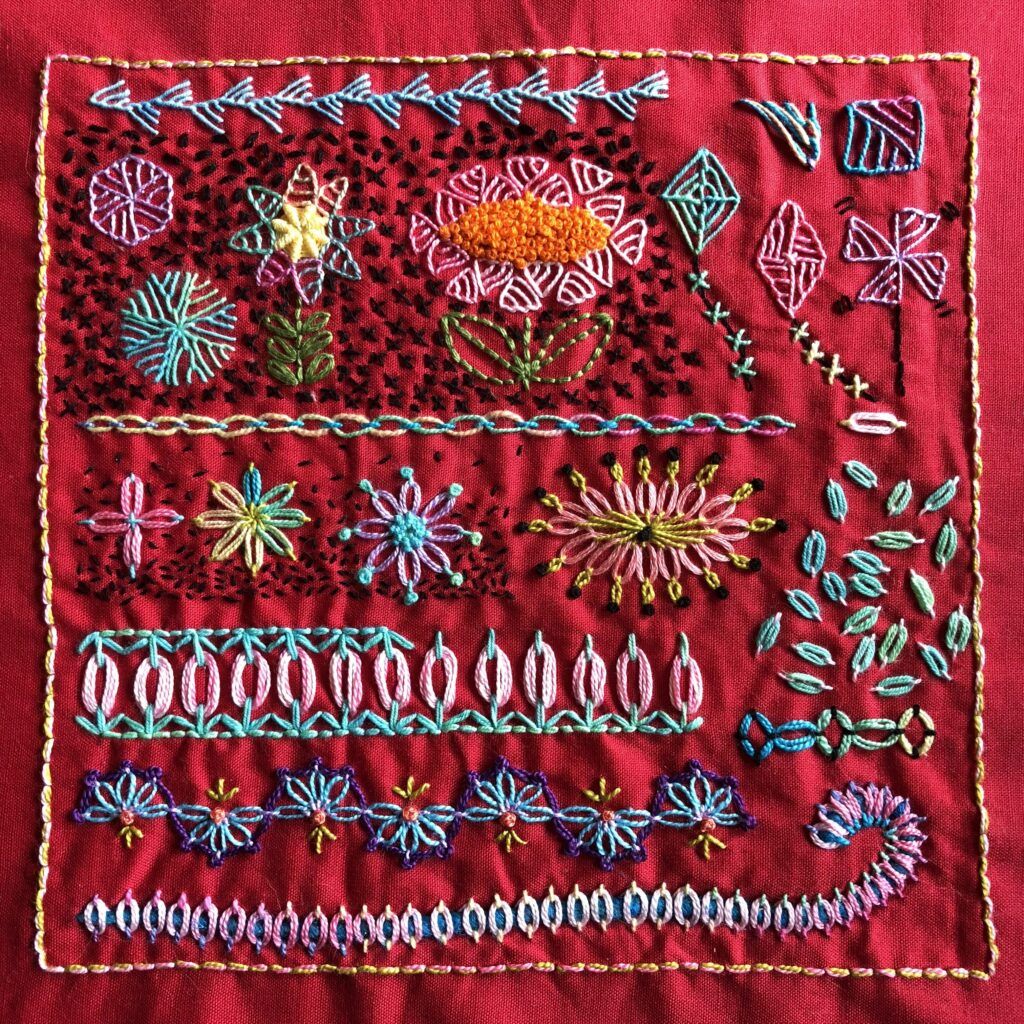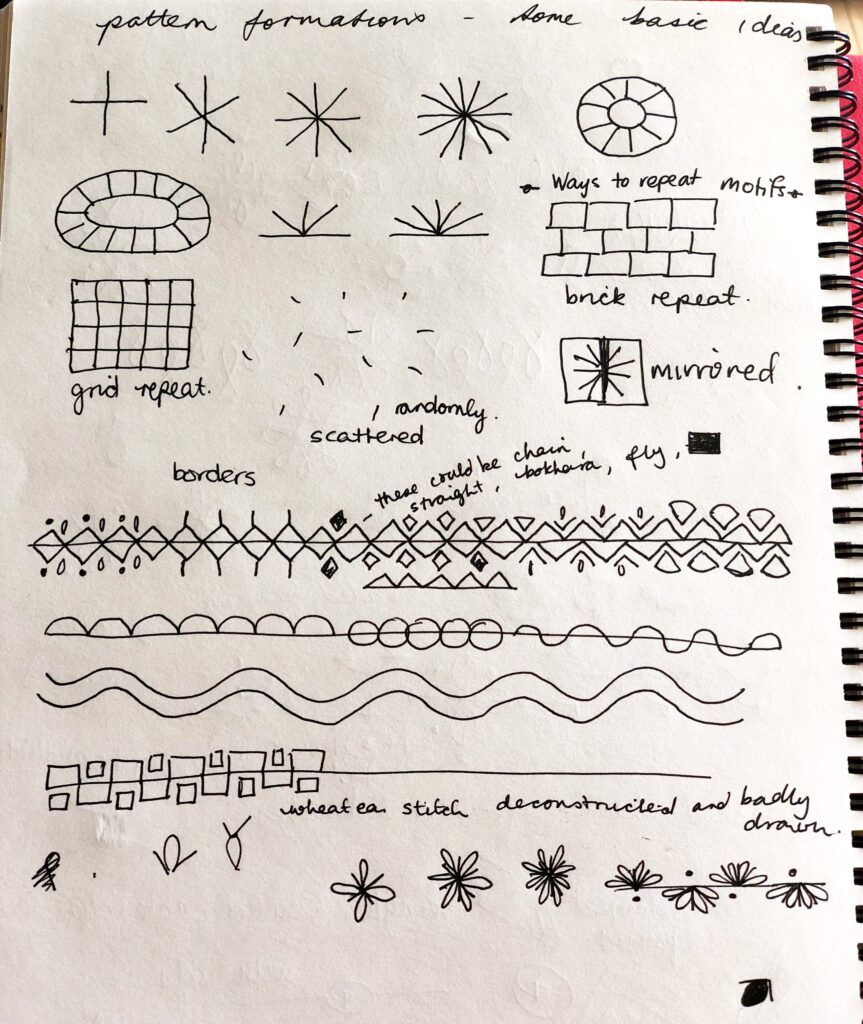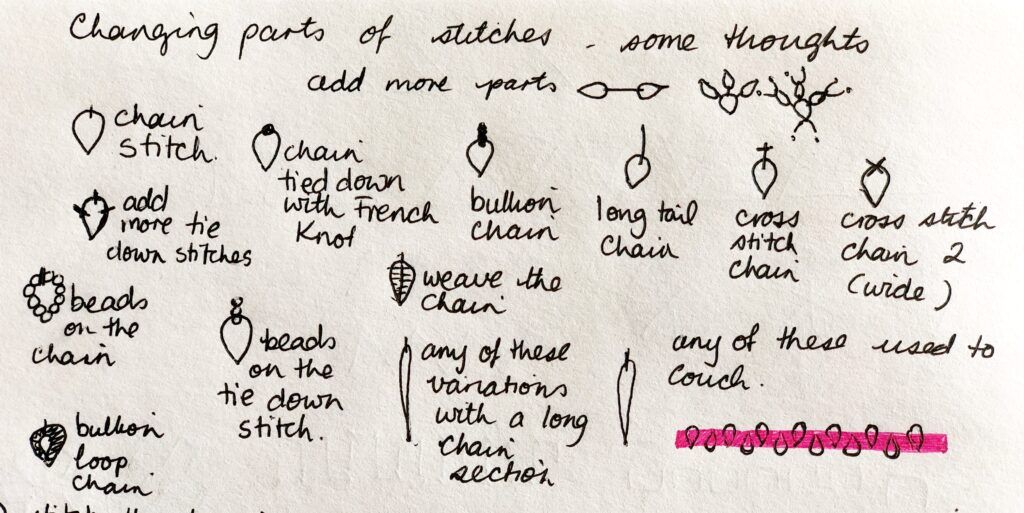I am an avid collector of vintage embroideries, especially ones with interesting floral designs. Finished ones, unworked ones, worn out and stained ones, if the price is right they come home with me, usually from our local op shop/charity thrift store for fifty cents to a few dollars.
Spectacular pieces go into my collection of pieces to use as they are, but I use the others as pieces of fabric to stitch on. Here are my two most recent pieces.
I loved the rose on this placemat but the stitching was quite worn, and it had a couple of cream coloured paint splotches that I didn’t notice until after I washed out the stains!

I took some scrap threads and doubled them up to about the thickness of six strand floss and worked running stitch across the background to make the rose “pop” out from the background. I’m a big fan of running stitch! I tried to offset each row of stitching but didn’t worry if stitches were a little wonky. I also removed the crocheted lace edging so I can dye it and use it for something else.
This piece will end up becoming part of another project. At the moment I think I’ll use it as part of a cover for one of my stitch sampler books, but who knows?
Another damaged doily became this very simple modern eyelet sampler. Orange and green are my favourite colours but no amount of soaking would remove all of the rust and ink stains from this little mat. I decided I could either cover them or cut them out. Why not both?
I used scraps of various orange and green threads and worked round eyelets in the centre, a flower at each end, and leaves on the top and bottom. (Click the photo to see a larger version).
Since the stitching holding the crocheted edging was quite worn, I worked running stitch with dark brown through the holes, which frames the finished piece nicely, I think. I’d never worked eyelets before so this little fifty cent doily was both educational and fun to make. It’s small enough to fit in with my other samplers so it will probably get bound into one of my fabric books for future reference. I’m definitely going to stitch a lot more of the flowers like the orange and brown one on the right!
Instructions for working eyelets can be found here on the French Knots vintage embroidery website. I experimented with a few different stitches around the leaf shapes after working the satin stitch over the edge. Most are finished off with back stitch to tidy them up, but a couple have tiny satin stitch and rounds of chain and blanket stitch as decorative finished around the outside.
I have another sampler worked on found embroidery to show you tomorrow, so please come back then. I’m quite excited by the way it turned out!


